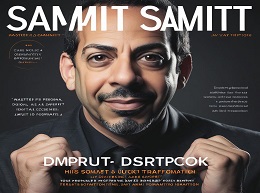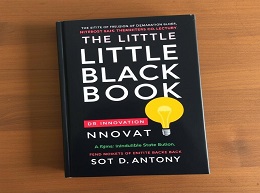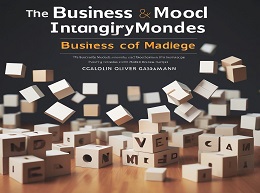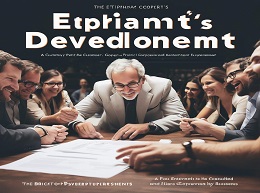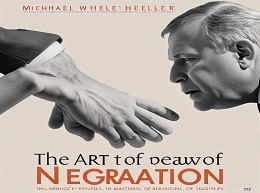How to Build a Billion Dollar App

How to Build a Billion Dollar App: A Comprehensive Review
The mobile app industry is a highly competitive space where only a few apps reach the coveted billion-dollar valuation. "How to Build a Billion Dollar App" by George Berkowski is a comprehensive guide that provides aspiring app developers and entrepreneurs with the strategies and insights needed to create a successful and profitable app. Drawing on his own experience and case studies from industry giants, Berkowski offers a practical roadmap to app success. This review explores the key themes of the book, highlighting essential strategies and real-world examples to engage readers.
The Billion Dollar App Dream
Berkowski begins by setting the stage with the allure of the billion-dollar app. He emphasizes that building a successful app is not just about having a great idea but also about execution, market understanding, and scalability. The book is divided into several sections, each focusing on different aspects of app development and growth.
Identifying a Market Need
One of the first steps in creating a successful app is identifying a genuine market need. Berkowski advises entrepreneurs to focus on solving real problems for their target audience. He stresses the importance of thorough market research to understand user pain points and preferences.
Example: Uber is a prime example of an app that identified a significant market need. By recognizing the inefficiencies in the traditional taxi industry, Uber created a platform that offers convenience, transparency, and reliability for both riders and drivers.
Building a Strong Team
Berkowski underscores the importance of assembling a talented and dedicated team. A successful app requires a diverse set of skills, including development, design, marketing, and business strategy. He recommends hiring individuals who are not only skilled but also passionate about the project.
Example: Instagram's co-founders, Kevin Systrom and Mike Krieger, combined their skills in engineering and design to create an app that offered a seamless and visually appealing user experience. Their collaboration was instrumental in Instagram's success.
Creating an Intuitive User Interface
A critical aspect of app success is the user interface (UI). Berkowski explains that a well-designed UI can significantly enhance user engagement and retention. He advises keeping the design simple, intuitive, and visually appealing to ensure users can navigate the app effortlessly.
Example: Airbnb's user-friendly interface allows users to easily search for accommodations, read reviews, and make bookings. The app's clean design and straightforward navigation contribute to its high user satisfaction and retention rates.
Prioritizing User Experience
User experience (UX) goes beyond the interface; it encompasses the overall interaction users have with the app. Berkowski highlights the importance of gathering user feedback and continuously iterating on the app to improve the UX.
Example: Spotify continuously updates its app based on user feedback to enhance the listening experience. Features like personalized playlists and seamless integration with other devices demonstrate Spotify's commitment to superior UX.
Achieving Product-Market Fit
Achieving product-market fit is crucial for app growth. Berkowski explains that this involves refining the app based on user feedback until it meets the needs of the target market effectively. He emphasizes the importance of metrics and analytics in this process.
Example: Slack started as a gaming company but pivoted to a team collaboration tool after identifying a gap in the market. By continuously refining its product based on user feedback, Slack achieved product-market fit and rapidly grew its user base.
Leveraging Growth Hacking Techniques
Growth hacking involves using innovative and low-cost strategies to acquire and retain users. Berkowski shares various growth hacking techniques that can help apps gain traction quickly. These include viral marketing, leveraging social media, and incentivizing referrals.
Example: Dropbox's referral program, which offered additional storage space for every referred user, significantly boosted its user acquisition. This growth hacking technique helped Dropbox grow from 100,000 to 4 million users in just 15 months.
Freemium Model
One of the most popular monetization strategies is the freemium model, where the app is free to use but offers premium features at a cost. Berkowski discusses how this model can attract a large user base while generating revenue from a subset of paying users.
Example: LinkedIn uses the freemium model effectively by offering basic features for free and premium services, such as advanced search and InMail, for a fee. This model has helped LinkedIn grow its user base while generating substantial revenue from premium memberships.
In-App Purchases and Subscriptions
In-app purchases and subscriptions are other common monetization strategies. Berkowski advises incorporating these options in a way that adds value to the user experience without being intrusive.
Example: Candy Crush Saga, a popular mobile game, generates significant revenue through in-app purchases. Players can buy extra lives, boosters, and other features to enhance their gaming experience, contributing to the game's financial success.
Crafting a Compelling Value Proposition
A compelling value proposition is essential for attracting users. Berkowski explains that the value proposition should clearly communicate the benefits of the app and how it solves users' problems. He emphasizes the importance of consistent messaging across all marketing channels.
Example: WhatsApp's value proposition of simple, fast, and secure messaging resonated with users worldwide. By focusing on these core benefits, WhatsApp attracted a massive user base without spending heavily on marketing.
Utilizing Multiple Marketing Channels
Berkowski highlights the importance of a multi-channel marketing approach. He advises using a combination of social media, content marketing, influencer partnerships, and paid advertising to reach a broader audience.
Example: Tinder used a combination of college campus ambassadors and social media marketing to quickly spread awareness and drive user acquisition. This multi-channel approach helped Tinder become one of the leading dating apps globally.
Learning from Success Stories
Throughout the book, Berkowski shares case studies from successful apps, providing valuable insights into their journeys. He analyzes the strategies that worked for them and how these can be applied to new ventures.
Example: Snapchat's focus on ephemeral content and innovative features like Stories set it apart from other social media platforms. Berkowski discusses how Snapchat's unique approach to content sharing contributed to its rapid growth and popularity among younger users.
Avoiding Common Pitfalls
Berkowski also addresses common mistakes that can hinder app success. He advises avoiding over-complicating the app, neglecting user feedback, and underestimating the importance of marketing.
Example: Google Glass, despite its innovative technology, failed to gain traction due to its high price, privacy concerns, and lack of a clear value proposition. Berkowski uses this example to illustrate the importance of addressing user needs and concerns effectively.
Turning Vision into Reality
"How to Build a Billion Dollar App" is a comprehensive guide that covers all aspects of app development, from ideation to execution. Berkowski's practical advice, backed by real-world examples, provides a valuable resource for entrepreneurs looking to turn their app ideas into successful businesses.
